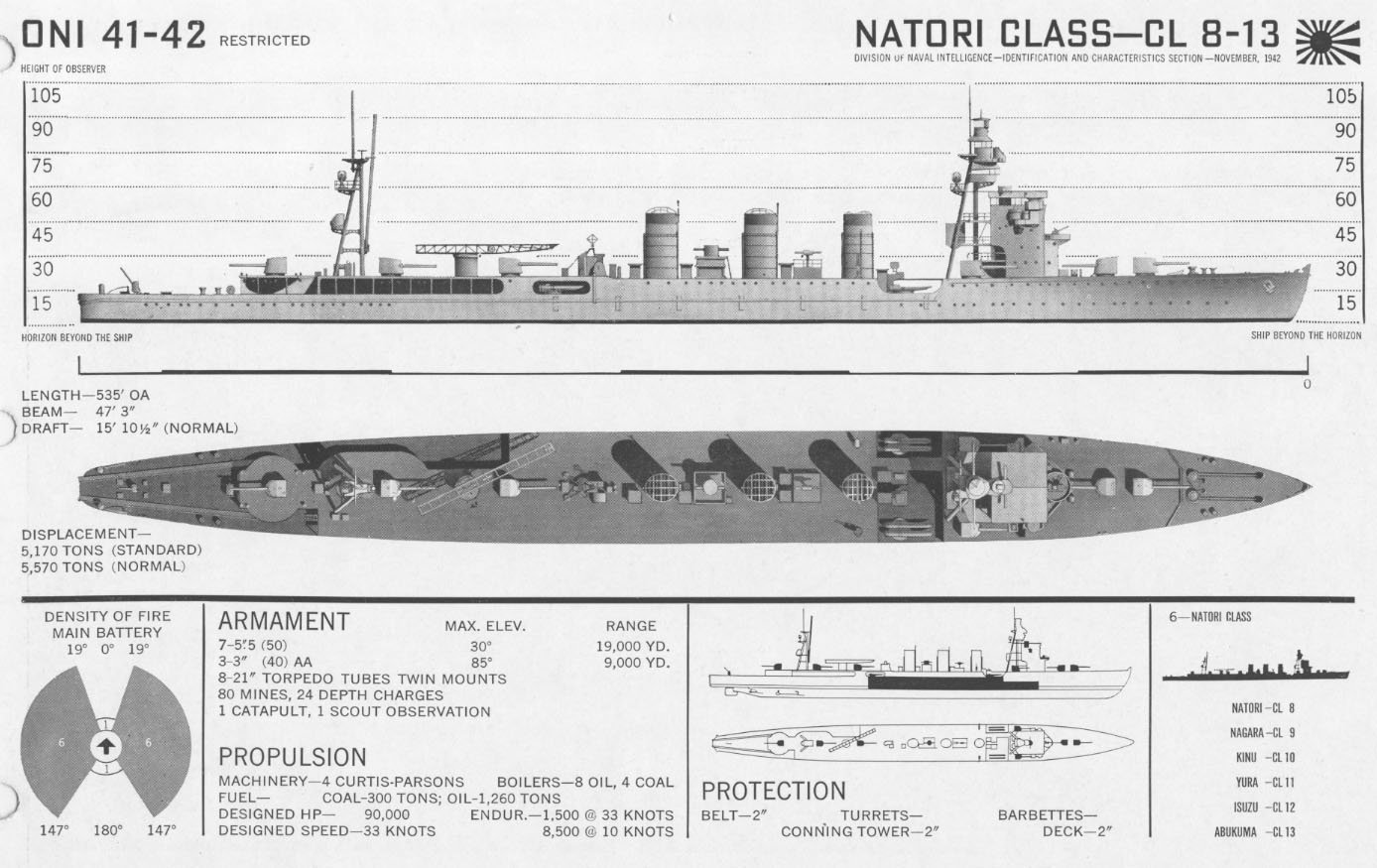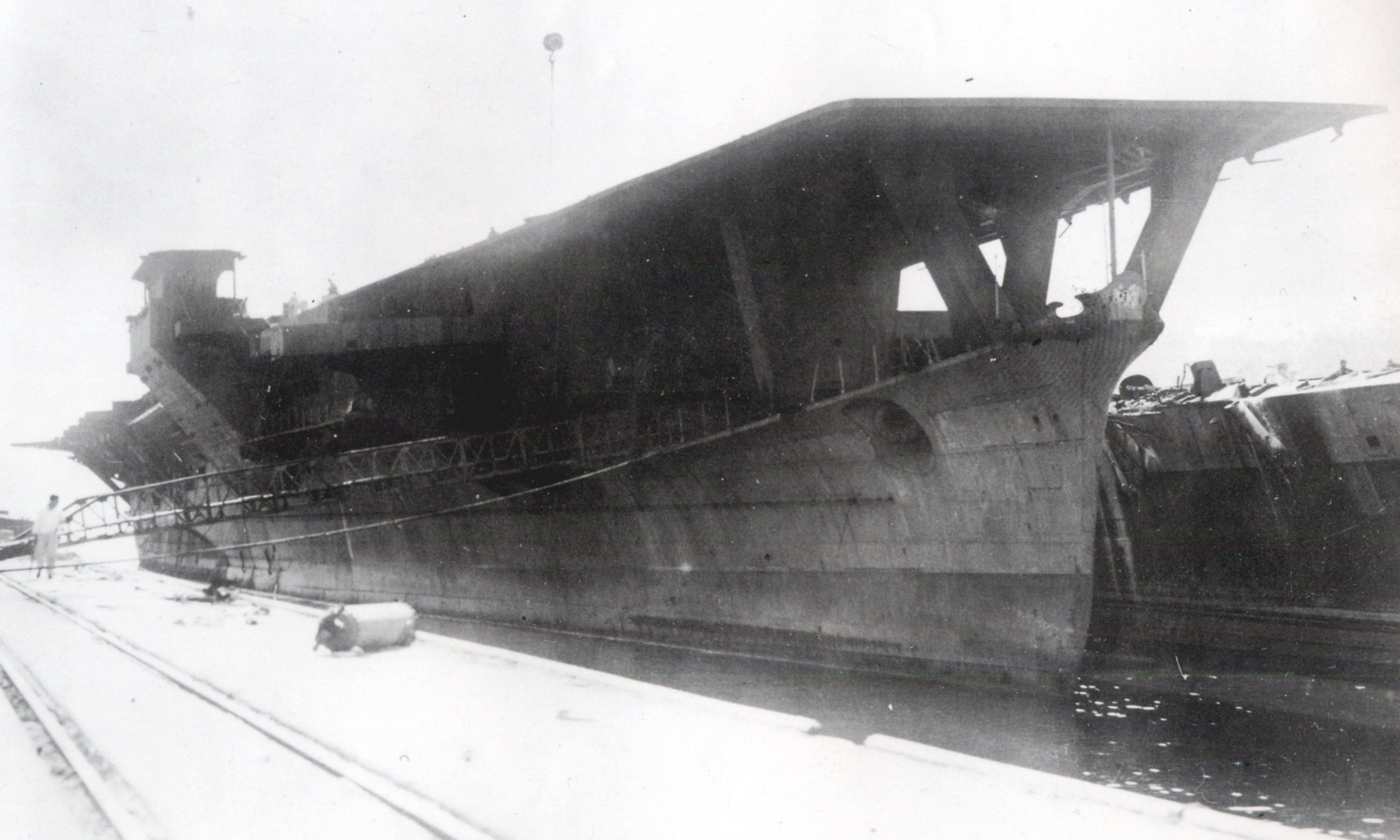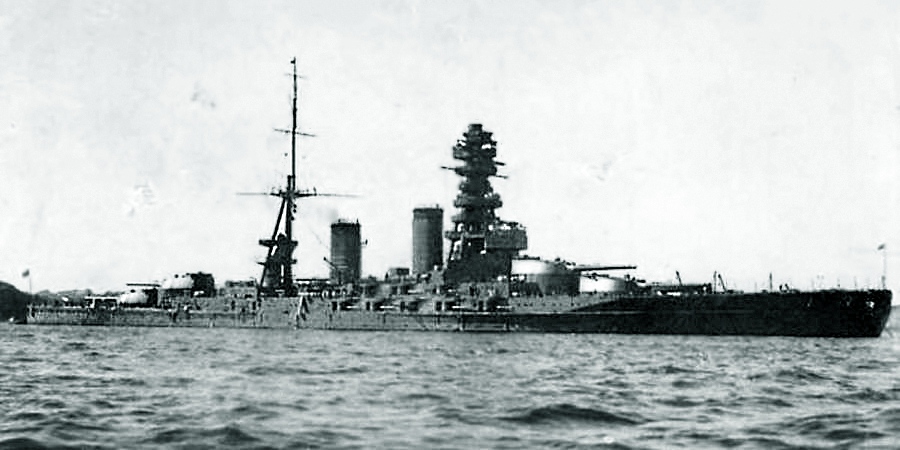|
Nagara-class Cruiser
The six were a class of six light cruisers built for and operated by the Imperial Japanese Navy. The ''Nagara''-class cruisers proved useful in combat operations ranging from the Aleutian Islands to the Indian Ocean throughout World War II. Most served as flagships for destroyer or submarine squadrons, and were deployed for transport or local defense missions. Towards the end of the war, the surviving vessels were increasingly obsolete and were retained as second-line units.Stille, ''Imperial Japanese Navy Light Cruisers 1941-45'', page 22 The ''Nagara'' class was followed by the very similar . Background A final three 5,500 ton class light cruisers authorized under the 8-4 Fleet Program were ordered by the Imperial Japanese Navy in 1920. Due to minor changes in design, primarily due to advances in torpedo technology, these three vessels were initially designated as "modified Kuma-class", or "5500-ton class Type II", before being re-designated after the lead vessel, . A secon ... [...More Info...] [...Related Items...] OR: [Wikipedia] [Google] [Baidu] |
Sasebo Naval Arsenal
was one of four principal naval shipyards owned and operated by the Imperial Japanese Navy. History The Sasebo Naval District was established at Sasebo, Nagasaki in 1886, as the third of the naval districts responsible for the defense of the Japanese home islands. After the establishment of the navy base, a ship repair facility was established in 1889 with a dry dock. With the addition of equipment and facilities for ship production by 1897, the "Sasebo Shipyards" were officially established, and renamed the "Sasebo Naval Arsenal" in 1903. Construction of the arsenal was supervised by the French engineer Louis-Émile Bertin. In 1913, a 250-ton crane was installed, and the shipbuilding facilities expanded to permit the construction of large warships. With the mothballing of the Maizuru Naval Arsenal due to restrictions by the Washington Naval Treaty, much of the design and prototype work for new classes of destroyers and torpedo boats formerly done at Maizuru was shifted to ... [...More Info...] [...Related Items...] OR: [Wikipedia] [Google] [Baidu] |
Imperial Japanese Navy
The Imperial Japanese Navy (IJN; Kyūjitai: Shinjitai: ' 'Navy of the Greater Japanese Empire', or ''Nippon Kaigun'', 'Japanese Navy') was the navy of the Empire of Japan from 1868 to 1945, when it was dissolved following Japan's surrender in World War II. The Japan Maritime Self-Defense Force (JMSDF) was formed between 1952–1954 after the dissolution of the IJN. The Imperial Japanese Navy was the third largest navy in the world by 1920, behind the Royal Navy and the United States Navy (USN). It was supported by the Imperial Japanese Navy Air Service for aircraft and airstrike operation from the fleet. It was the primary opponent of the Western Allies in the Pacific War. The origins of the Imperial Japanese Navy go back to early interactions with nations on the Asian continent, beginning in the early medieval period and reaching a peak of activity during the 16th and 17th centuries at a time of cultural exchange with European powers during the Age of Discovery. After t ... [...More Info...] [...Related Items...] OR: [Wikipedia] [Google] [Baidu] |
Rangefinding Telemeter
A rangefinder (also rangefinding telemeter, depending on the context) is a device used to measure distances to remote objects. Originally optical devices used in surveying, they soon found applications in other fields, such as photography and in the military. They were specially useful for finding the range of a target, such as in naval gunnery and anti-aircraft artillery. The word ''telemeter'' is derived . Designs The first rangefinder telemeter was invented by James Watt in 1769 and put to use in 1771 in surveying canals. Watt called his instrument a micrometer, a term now used with a different meaning in engineering (the micrometer screw gauge). It consisted of two parallel hairs in the focal plane of a telescope eyepiece crossing an upright hair. At the point to be measured, two sliding targets on a surveyor's rod were adjusted to align with the hairs in the telescope. The distance to the rod could then be determined from the distance between the targets on the ... [...More Info...] [...Related Items...] OR: [Wikipedia] [Google] [Baidu] |
Aircraft Catapult
An aircraft catapult is a device used to allow aircraft to take off from a very limited amount of space, such as the deck of a vessel, but can also be installed on land-based runways in rare cases. It is now most commonly used on aircraft carriers, as a form of assisted take off. In the form used on aircraft carriers the catapult consists of a track, or slot, built into the flight deck, below which is a large piston or ''shuttle'' that is attached through the track to the nose gear of the aircraft, or in some cases a wire rope, called a catapult bridle, is attached to the aircraft and the catapult shuttle. Other forms have been used historically, such as mounting a launching cart holding a seaplane on a long girder-built structure mounted on the deck of a warship or merchant vessel, but most catapults share a similar sliding track concept. Different means have been used to propel the catapult, such as weight and derrick, gunpowder, flywheel, air pressure, hydraulic, and steam ... [...More Info...] [...Related Items...] OR: [Wikipedia] [Google] [Baidu] |
Bridge (ship)
The interior of the bridge of the Sikuliaq'', docked in Ketchikan, Alaska">RV_Sikuliaq.html" ;"title="Research Vessel ''RV Sikuliaq">Sikuliaq'', docked in Ketchikan, Alaska file:Wheelhouse of Leao Dos Mares.jpg, Wheelhouse on a tugboat, topped with a flying bridge The bridge, also known as the pilothouse or wheelhouse, is a room or platform of a ship from which the ship can be commanded. When a ship is under way, the bridge is manned by an officer of the watch aided usually by an able seaman acting as a lookout. During critical maneuvers the captain will be on the bridge, often supported by an officer of the watch, an able seaman on the wheel and sometimes a pilot, if required. History and etymology The compass platform of a British destroyer in the Battle of the Atlantic during the Second World War with central binnacle">Second_World_War.html" ;"title="Battle of the Atlantic during the Second World War">Battle of the Atlantic during the Second World War with central bin ... [...More Info...] [...Related Items...] OR: [Wikipedia] [Google] [Baidu] |
Gun Turret
A gun turret (or simply turret) is a mounting platform from which weapons can be fired that affords protection, visibility and ability to turn and aim. A modern gun turret is generally a rotatable weapon mount that houses the crew or mechanism of a projectile-firing weapon and at the same time lets the weapon be aimed and fired in some degree of azimuth and elevation (cone of fire). Description Rotating gun turrets protect the weapon and its crew as they rotate. When this meaning of the word "turret" started being used at the beginning of the 1860s, turrets were normally cylindrical. Barbettes were an alternative to turrets; with a barbette the protection was fixed, and the weapon and crew were on a rotating platform inside the barbette. In the 1890s, armoured hoods (also known as "gun houses") were added to barbettes; these rotated with the platform (hence the term "hooded barbette"). By the early 20th Century, these hoods were known as turrets. Modern warships have gu ... [...More Info...] [...Related Items...] OR: [Wikipedia] [Google] [Baidu] |
Coal
Coal is a combustible black or brownish-black sedimentary rock, formed as rock strata called coal seams. Coal is mostly carbon with variable amounts of other elements, chiefly hydrogen, sulfur, oxygen, and nitrogen. Coal is formed when dead plant matter decays into peat and is converted into coal by the heat and pressure of deep burial over millions of years. Vast deposits of coal originate in former wetlands called coal forests that covered much of the Earth's tropical land areas during the late Carboniferous ( Pennsylvanian) and Permian times. Many significant coal deposits are younger than this and originate from the Mesozoic and Cenozoic eras. Coal is used primarily as a fuel. While coal has been known and used for thousands of years, its usage was limited until the Industrial Revolution. With the invention of the steam engine, coal consumption increased. In 2020, coal supplied about a quarter of the world's primary energy and over a third of its electricity. Some iron ... [...More Info...] [...Related Items...] OR: [Wikipedia] [Google] [Baidu] |
Fuel Oil
Fuel oil is any of various fractions obtained from the distillation of petroleum (crude oil). Such oils include distillates (the lighter fractions) and residues (the heavier fractions). Fuel oils include heavy fuel oil, marine fuel oil (MFO), bunker fuel, furnace oil (FO), gas oil (gasoil), heating oils (such as home heating oil), diesel fuel and others. The term ''fuel oil'' generally includes any liquid fuel that is burned in a furnace or boiler to generate heat ( heating oils), or used in an engine to generate power (as motor fuels). However, it does not usually include other liquid oils, such as those with a flash point of approximately , or oils burned in cotton- or wool-wick burners. In a stricter sense, ''fuel oil'' refers only to the heaviest commercial fuels that crude oil can yield, that is, those fuels heavier than gasoline (petrol) and naphtha. Fuel oil consists of long-chain hydrocarbons, particularly alkanes, cycloalkanes, and aromatics. Small molecules, such as t ... [...More Info...] [...Related Items...] OR: [Wikipedia] [Google] [Baidu] |
Displacement (ship)
The displacement or displacement tonnage of a ship is its weight. As the term indicates, it is measured indirectly, using Archimedes' principle, by first calculating the volume of water displaced by the ship, then converting that value into weight. Traditionally, various measurement rules have been in use, giving various measures in long tons. Today, tonnes are more commonly used. Ship displacement varies by a vessel's degree of load, from its empty weight as designed (known as "lightweight tonnage") to its maximum load. Numerous specific terms are used to describe varying levels of load and trim, detailed below. Ship displacement should not be confused with measurements of volume or capacity typically used for commercial vessels and measured by tonnage: net tonnage and gross tonnage. Calculation The process of determining a vessel's displacement begins with measuring its draft.George, 2005. p.5. This is accomplished by means of its "draft marks" (or "load lines"). A mer ... [...More Info...] [...Related Items...] OR: [Wikipedia] [Google] [Baidu] |
Long Lance
The was a -diameter torpedo of the Imperial Japanese Navy (IJN), launched from surface ships. It is commonly referred to as the Long Lance by most modern English-language naval historians, a nickname given to it after the war by Samuel Eliot Morison, the chief historian of the U.S. Navy, who spent much of the war in the Pacific Theater. In Japanese references, the term is also used, in reference to its propulsion system. It was the most advanced naval torpedo in the world at the time. History and development The Type 93's development (in parallel with a submarine-launched model, the Type 95) began in Japan in 1928, under the auspices of Rear Admiral Kaneji Kishimoto and Captain Toshihide Asakuma. The torpedo design was inspired by the British oxygen-enriched torpedoes used on the s. At the time, the most powerful potential enemy of the Japanese Navy was the United States Navy's Pacific Fleet. The U.S. Navy's doctrine, presuming an invasion by Japan of the Philippines (an A ... [...More Info...] [...Related Items...] OR: [Wikipedia] [Google] [Baidu] |
Eight-eight Fleet
The was a Japanese naval strategy formulated for the development of the Imperial Japanese Navy in the first quarter of the 20th century, which stipulated that the navy should include eight first-class battleships and eight armoured cruisers or battlecruisers. History and development The concept of the "Eight-Eight Fleet" originated in the aftermath of the Russo-Japanese War with the 1907 Imperial Defense Policy between the Japanese government and the competing services of the Army and Navy. The policy called for the construction of a battle fleet of eight modern battleships of 20,000 tons each and eight modern armored cruisers of 18,000 tons each. These were to be complemented by the construction of several lesser warship types, including cruisers and destroyers. The plan was inspired by the Mahanian doctrine of Satō Tetsutarō who advocated that Japanese security could only be guaranteed by a strong navy. Satō argued that to ensure security, Japan should be capable of defea ... [...More Info...] [...Related Items...] OR: [Wikipedia] [Google] [Baidu] |



%2C_F-14_on_catapult.jpg)



.jpg)
